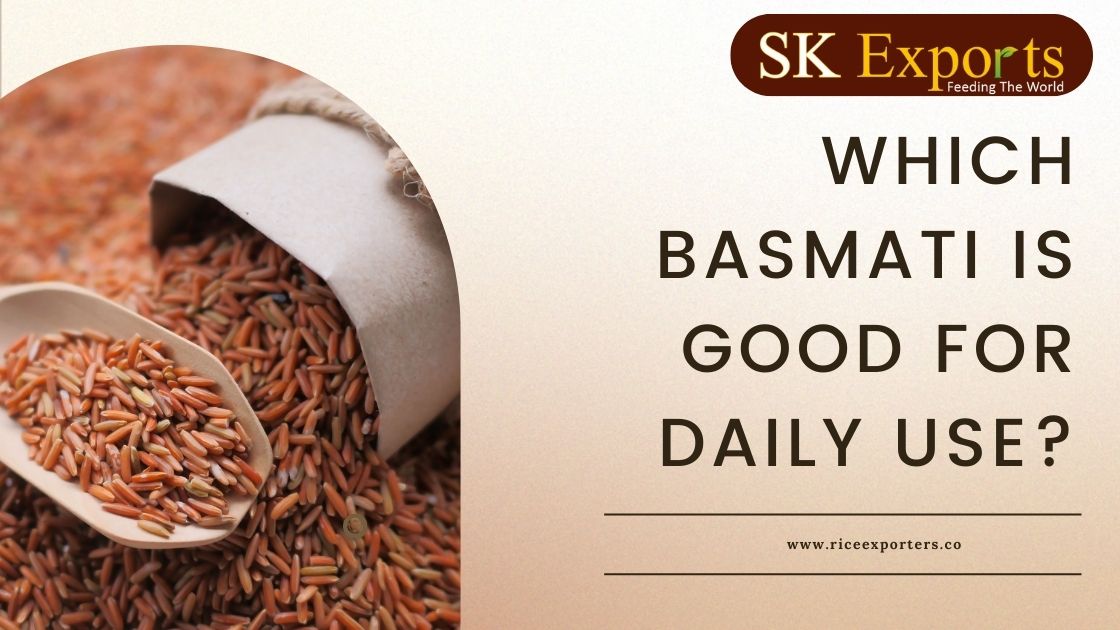When it comes to selecting the perfect basmati rice for daily consumption, it’s essential to consider factors like taste, aroma, texture, and nutritional value. With numerous options available in the market, it can be overwhelming to choose the right one that meets your preferences and dietary requirements. In this comprehensive guide, we’ll explore the characteristics of different basmati rice varieties and provide insights to help you make an informed decision.
Understanding Basmati Rice
Basmati rice is renowned for its distinct aroma, long grains, and fluffy texture. It originates from the Indian subcontinent and is widely cherished for its delicate flavor and versatility in various culinary dishes. Here are some key features to consider when selecting basmati rice:
- Grain Length: Basmati rice is categorized based on grain length, with options ranging from traditional to extra-long grain varieties. Longer grains typically result in fluffier and more separate cooked rice, ideal for dishes like biryani and pilaf.
- Aroma: One of the most distinguishing characteristics of basmati rice is its aromatic fragrance, often described as nutty or floral. The intensity of the aroma can vary among different varieties, influencing the overall sensory experience of the cooked rice.
- Texture: Basmati rice is prized for its light and fluffy texture, which enhances the mouthfeel of dishes. The grains should be tender yet firm, with minimal stickiness when cooked properly.
- Cooking Time: While basmati rice generally requires longer cooking times compared to other rice varieties, certain types may have shorter or longer cooking durations. Understanding the cooking time can help streamline meal preparation and ensure consistent results.
Types of Basmati Rice
- Traditional Basmati Rice: Traditional basmati rice varieties, such as Indian or Pakistani basmati, boast long and slender grains with a pronounced aroma. They are well-suited for everyday meals, including rice bowls, curries, and stir-fries.
- Extra-Long Grain Basmati Rice: This premium variety of basmati rice features exceptionally long grains, offering a luxurious dining experience. It’s perfect for special occasions and gourmet dishes where presentation and texture play a crucial role.
- Brown Basmati Rice: Brown basmati rice is a healthier alternative to white rice, retaining the bran layer and germ during processing. It has a nuttier flavor and higher nutritional content, making it an excellent choice for health-conscious individuals.
- Organic Basmati Rice: Organic basmati rice is cultivated using organic farming practices without synthetic pesticides or fertilizers. It appeals to environmentally-conscious consumers seeking high-quality, sustainable food options.
| Basmati Variety | Aroma | Grain Length | Texture | Cooking Time |
|---|---|---|---|---|
| Traditional | Strong, nutty | Long | Fluffy, separate grains | 15-20 mins |
| Brown | Nutty | Similar to traditional | Chewy, due to bran layer | 30-40 mins |
| White | Fragrant | Long | Fluffy, separate grains | 10-15 mins |
| Aged | Subtle, hints of wood | Long | Fluffy, separate grains | 15-20 mins |
Choosing the Right Basmati Rice for Daily Use
- Preference: Consider your personal preferences regarding grain length, aroma, and texture. Experiment with different varieties to discover the one that best complements your favorite recipes.
- Budget: While premium basmati rice varieties may offer superior quality and flavor, they often come with a higher price tag. Determine your budget and select a basmati rice that strikes a balance between affordability and quality.
- Culinary Applications: Think about how you plan to use the basmati rice in your daily cooking. For everyday dishes like rice bowls, soups, and stews, a medium-grain basmati rice may suffice. Save the extra-long grain varieties for special occasions or elaborate meals.
- Nutritional Value: If health and nutrition are priorities, consider opting for brown or organic basmati rice, which offer additional dietary fiber, vitamins, and minerals compared to white varieties.
Conclusion
In conclusion, the best Basmati rice for daily use depends on your preferences and dietary needs. If you’re looking for a nutritious option with a chewier texture, brown Basmati is an excellent choice. For quick and convenient meals, white Basmati is the way to go. Whichever type you choose, rest assured that Basmati rice will add a touch of elegance to your everyday cooking.
Frequently Asked Questions (FAQs)
Q: Is Basmati rice suitable for weight loss diets?
A: Yes, Basmati rice, especially brown Basmati, is a good option for weight loss diets due to its high fiber content, which promotes satiety.
Q: Can I use Basmati rice in recipes that call for other rice varieties?
A: Absolutely! Basmati rice can be substituted for other rice varieties in most recipes. Just adjust the cooking time accordingly.
Q: How should Basmati rice be stored to maintain freshness?
A: Basmati rice should be stored in an airtight container in a cool, dry place away from sunlight. Avoid storing it in the refrigerator as it can affect the texture and flavor.
Q: Is Basmati rice gluten-free?
A: Yes, Basmati rice is naturally gluten-free, making it suitable for individuals with gluten intolerance or celiac disease.
